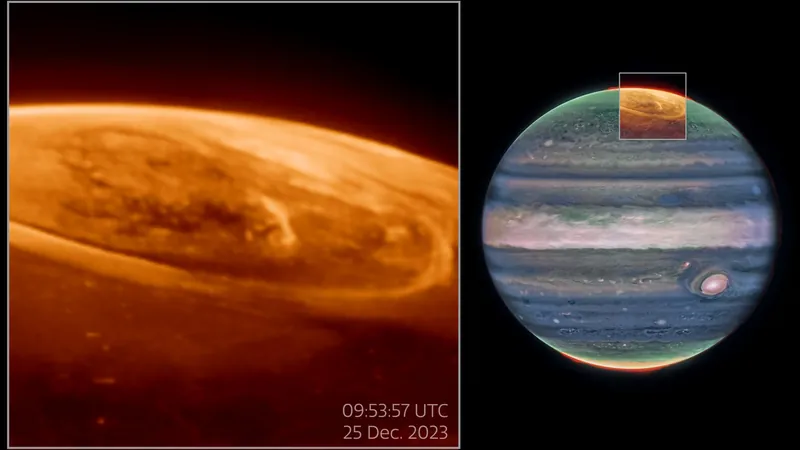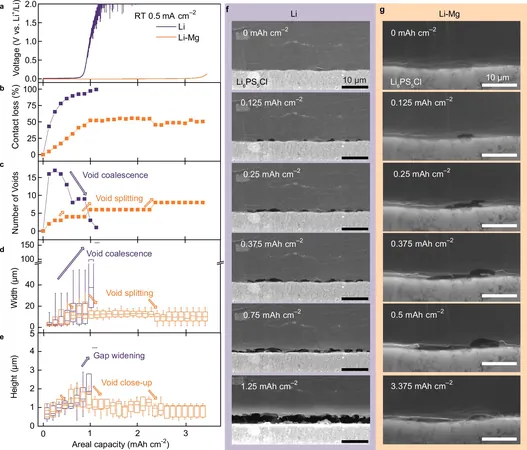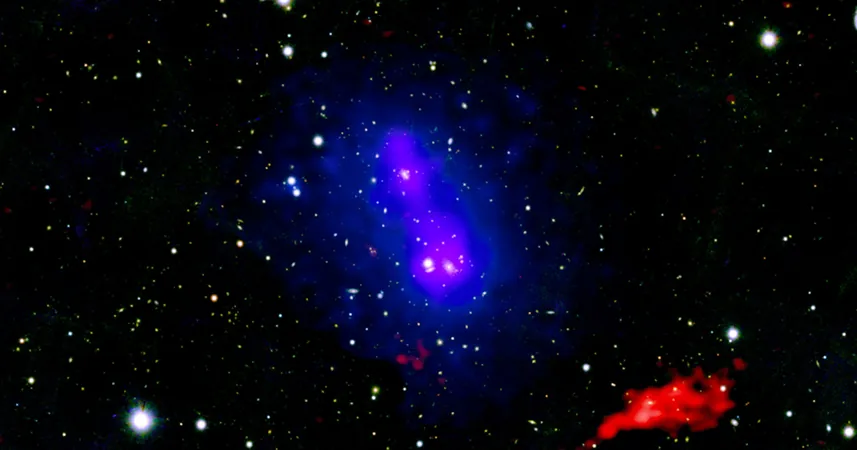
Unbelievable New Images of Jupiter's Dazzling Auroras Captured by James Webb Space Telescope! (Watch Here)
2025-05-12
Author: Li
The James Webb Space Telescope has achieved a groundbreaking feat by capturing breathtaking images of brilliant auroras on Jupiter, highlighting an extraterrestrial spectacle like never before!
On December 25, 2023, scientists aimed the JWST at Jupiter, unveiling stunning auroras that adorned the gas giant's north pole. Much like Earth's northern lights, these celestial displays occur when high-energy particles from the sun's solar wind collide with Jupiter's upper atmosphere, funneled towards the poles by the planet's powerful magnetic field.
But that's not all—on Jupiter, auroras can also be formed by particles ejected from the volcanic moon Io. Remarkably, these auroras outshine Earth's version by hundreds of times, making them a truly spectacular sight.
As the team analyzed the data on that fateful Christmas Day, they were left in awe of how vibrant and dynamic these auroras were.
"What a Christmas present it was—it just blew me away!" exclaimed Jonathan Nichols from the University of Leicester, an expert in planetary auroras and lead author of a new study on Jupiter’s stunning displays. "We anticipated that the auroras would fade in and out slowly, perhaps over a quarter of an hour. Instead, we witnessed the entire auroral region sparkling and shifting, changing by the second!"
Utilizing JWST's advanced NIRCam (Near-Infrared Camera) along with UV sensors from the Hubble Telescope, Nichols and his team uncovered astounding details about Jupiter's electrifying auroras.
"Surprisingly, the brightest light seen by Webb didn’t match any features in Hubble's images, leaving us puzzled," Nichols stated. "To produce the mix of brightness observed by both telescopes, we’re hypothesizing that a unique combination of high quantities of very low-energy particles must be interacting with the atmosphere—a phenomenon we previously thought was impossible!"
The JWST had previously observed Jupiter's auroras in 2022, capturing them glimmering at high altitudes along with faint rings encircling the giant and two of its smaller moons, Amalthea and Adrastea.
Looking ahead, Nichols and his team are excited to continue investigating this mystery using both the Hubble and JWST. Their research aims to unravel the complexities of how these unusual particles interact with Jupiter's atmosphere, potentially offering valuable insights into the planet's magnetosphere—an intriguing area of space shaped by its magnetic field.
Stay tuned for more updates as we delve deeper into the wonders of Jupiter's auroras!




 Brasil (PT)
Brasil (PT)
 Canada (EN)
Canada (EN)
 Chile (ES)
Chile (ES)
 Česko (CS)
Česko (CS)
 대한민국 (KO)
대한민국 (KO)
 España (ES)
España (ES)
 France (FR)
France (FR)
 Hong Kong (EN)
Hong Kong (EN)
 Italia (IT)
Italia (IT)
 日本 (JA)
日本 (JA)
 Magyarország (HU)
Magyarország (HU)
 Norge (NO)
Norge (NO)
 Polska (PL)
Polska (PL)
 Schweiz (DE)
Schweiz (DE)
 Singapore (EN)
Singapore (EN)
 Sverige (SV)
Sverige (SV)
 Suomi (FI)
Suomi (FI)
 Türkiye (TR)
Türkiye (TR)
 الإمارات العربية المتحدة (AR)
الإمارات العربية المتحدة (AR)